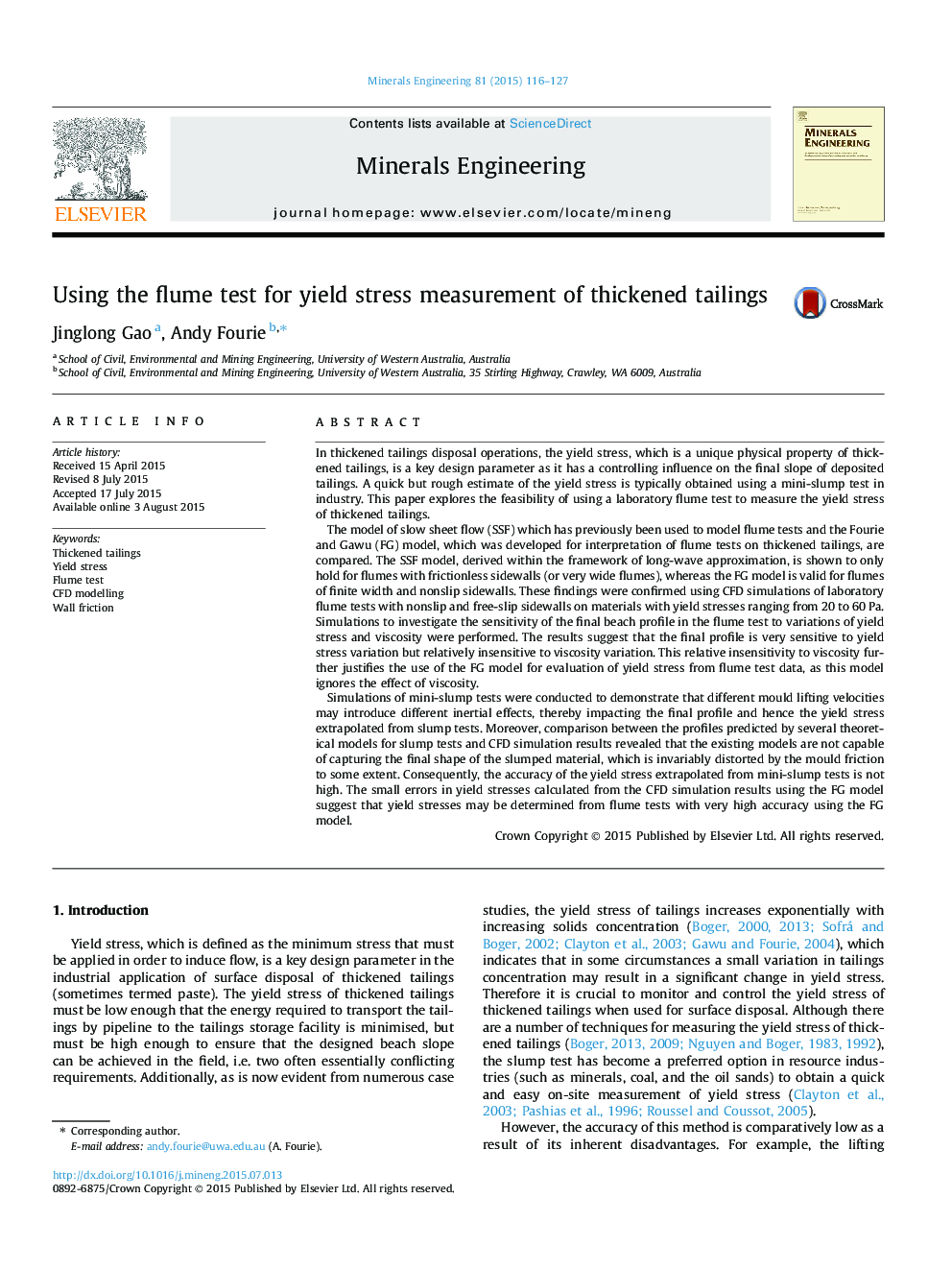| کد مقاله | کد نشریه | سال انتشار | مقاله انگلیسی | نسخه تمام متن |
|---|---|---|---|---|
| 232873 | 465310 | 2015 | 12 صفحه PDF | دانلود رایگان |

• Laboratory flume tests may be used for yield stress measurement.
• Flume tests on thickened tailings must account for side wall and base friction.
• The smooth sheet flow model should not be used for interpretation of flume tests.
• Potential exists for development of a desktop flume for measuring yield stress.
• Flow rates should be kept as low as possible to facilitate yield stress measurement.
In thickened tailings disposal operations, the yield stress, which is a unique physical property of thickened tailings, is a key design parameter as it has a controlling influence on the final slope of deposited tailings. A quick but rough estimate of the yield stress is typically obtained using a mini-slump test in industry. This paper explores the feasibility of using a laboratory flume test to measure the yield stress of thickened tailings.The model of slow sheet flow (SSF) which has previously been used to model flume tests and the Fourie and Gawu (FG) model, which was developed for interpretation of flume tests on thickened tailings, are compared. The SSF model, derived within the framework of long-wave approximation, is shown to only hold for flumes with frictionless sidewalls (or very wide flumes), whereas the FG model is valid for flumes of finite width and nonslip sidewalls. These findings were confirmed using CFD simulations of laboratory flume tests with nonslip and free-slip sidewalls on materials with yield stresses ranging from 20 to 60 Pa. Simulations to investigate the sensitivity of the final beach profile in the flume test to variations of yield stress and viscosity were performed. The results suggest that the final profile is very sensitive to yield stress variation but relatively insensitive to viscosity variation. This relative insensitivity to viscosity further justifies the use of the FG model for evaluation of yield stress from flume test data, as this model ignores the effect of viscosity.Simulations of mini-slump tests were conducted to demonstrate that different mould lifting velocities may introduce different inertial effects, thereby impacting the final profile and hence the yield stress extrapolated from slump tests. Moreover, comparison between the profiles predicted by several theoretical models for slump tests and CFD simulation results revealed that the existing models are not capable of capturing the final shape of the slumped material, which is invariably distorted by the mould friction to some extent. Consequently, the accuracy of the yield stress extrapolated from mini-slump tests is not high. The small errors in yield stresses calculated from the CFD simulation results using the FG model suggest that yield stresses may be determined from flume tests with very high accuracy using the FG model.
Journal: Minerals Engineering - Volume 81, 1 October 2015, Pages 116–127